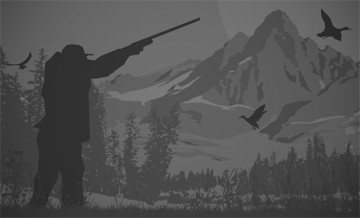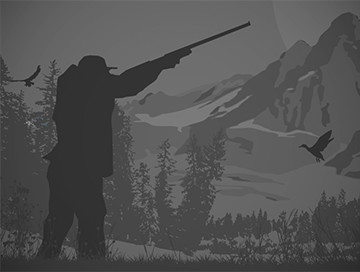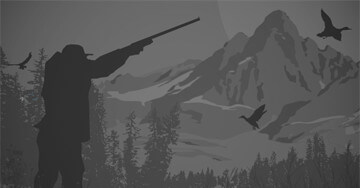Karte von Serbien
Über die Jagd in Serbien
Serbia is located in southeastern Europe, covering an area of the Balkans and part of central Europe. Serbia is not widely known as a hunting destination, but the country is home to first-class trophies of a wide variety of European species, and its hunting grounds are vast, stretching from the flat, agricultural plains of Vojvodina in the north to the unspoiled mountainous regions. Serbia’s hunting areas, which consist of both free-range and fenced estates, are overseen by hunting associations and the wildlife is carefully managed by biologists and gamekeepers under the auspices of state-owned companies, as well as local hunting associations. Roebuck grow large in Serbia, and populations are dense, with as many as 50 to 100 deer seen per day, particularly during the rut in May. Boar hunting is excellent, and there are also red deer, fallow deer, and mouflon. The bird hunting in this country may be one of the world’s best-kept hunting secrets. Wild quail, pigeons, pheasants, ducks, and geese are all available. Hunting tourism in Serbia has strict rules, and there is some bureaucracy to contend with, but the Serbians are friendly and the country is trying to encourage more hunters to visit.
Was Sie wissen müssen
-
1. Planen Sie Ihre Reise
-
2. Ihre Ankunft
-
3. Die Jagd
-
4. Nach der Jagd
Planen Sie Ihre Reise
Die meisten Jäger kommen mit dem Flugzeug in der Hauptstadt Belgrad an. Seien Sie sich bewusst, dass es nicht möglich ist, aus dem Kosovo nach Serbien einzureisen. Einigen Reisenden mit kosovarischen Ein- oder Ausreisestempeln in ihren Pässen, wurden die Einreise nach Serbien verweigert.
Offiziell müssen sich alle Besucher bei der Polizei anmelden. Ihr Jagdanbieter oder Hotel wird dies wahrscheinlich für Sie tun. Dies wird selten durchgesetzt, aber wenn man beim Verlassen von Serbien keine Registrierungsdokumente vorlegen kann, kann dies zu einer Geldstrafe führen.
Es ist am besten, von einem Dolmetscher abgeholt zu werden, der Sie durch die Ankunfts- und Zollformalitäten bringen kann, besonders, wenn Sie Ihre eigene Feuerwaffe mitbringen.
Ihre Ankunft
Die meisten Rehbockjagden werden mittels Pirsch durchgeführt; In den weiten, offenen Gebieten im Norden des Landes wird oft ein Fahrzeug benutzt, um Wild aus der Ferne anzusprechen, und die Jagd wird dann zu Fuß vollendet. Die Federwildjagd wird oft mit Hunden durchgeführt.
Die Jagd
Trophäen werden nach der Jagd gekocht und gemessen, in der Regel vom Jagdverband, der auch die Preisliste anhand der Größe der Trophäe festlegt. Bevor der Jäger seine Trophäe bekommt, wird die Trophäe gemessen und die Gebühr ermittelt.
Die anfängliche Trophäenvorbereitung wird normalerweise vom Jagdanbieter durchgeführt. Die Exportdokumente und Veterinärbescheinigungen werden in der Regel unmittelbar nach der Bewertung der Trophäe von der Verwaltung des Jagdgebiets vorbereitet. Besprechen Sie die Anforderungen und Verfahren für die Trophäenexporte mit Ihrem Jagdanbieter, bevor Sie Ihre Jagdreise antreten.
Nach der Jagd
Die anfängliche Trophäenvorbereitung wird normalerweise vom Jagdanbieter durchgeführt. Die Exportdokumente und Veterinärbescheinigungen werden in der Regel unmittelbar nach der Bewertung der Trophäe von der Verwaltung des Jagdgebiets vorbereitet. Besprechen Sie die Anforderungen und Verfahren für die Trophäenexporte mit Ihrem Jagdanbieter, bevor Sie Ihre Jagdreise antreten.
Preisverteilung
An diesem Land interessiert? Newsletter anmelden, um Angebote direkt in Ihren Posteingang zu bekommen




